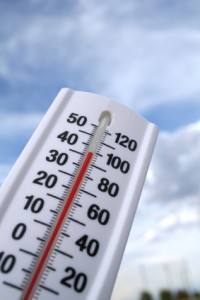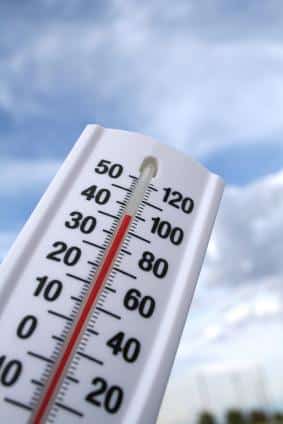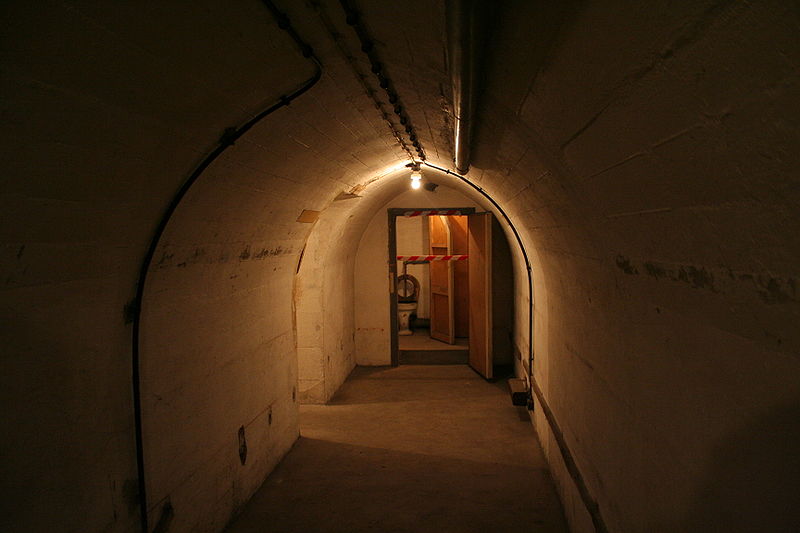Summer is finally here, and that means the heat is here as well. Surviving extreme heat, and more importantly, the biological responses by your body to the extreme heat, can be difficult at best during a situation that is less than ideal.
 So it goes without saying that preparation once again tops the list of things to do to avoid the complications of extreme heat, heat exhaustion, heat stroke, and biological shutdown caused by rising temperatures. Preparation can have the biggest impact on your chances of avoiding overheating, but practical implementation is also an incredibly important part in the process. Everyone knows the basic “stay hydrated” rhetoric and understands that the body can’t rise too far above the 100-degree mark before catastrophic systems failures can occur. However, understanding the science behind the way the body works can help you to devise unique ways to stay alive when faced with an uncompromising rise in temperature.
So it goes without saying that preparation once again tops the list of things to do to avoid the complications of extreme heat, heat exhaustion, heat stroke, and biological shutdown caused by rising temperatures. Preparation can have the biggest impact on your chances of avoiding overheating, but practical implementation is also an incredibly important part in the process. Everyone knows the basic “stay hydrated” rhetoric and understands that the body can’t rise too far above the 100-degree mark before catastrophic systems failures can occur. However, understanding the science behind the way the body works can help you to devise unique ways to stay alive when faced with an uncompromising rise in temperature.
Physiologically speaking, the body contributes more to the rise in core temperature than the environment usually does. The body heats most dramatically from the metabolic processing of energy, but not necessarily in the traditional sense of food metabolism. The body metabolizes excess energy created by inefficient work processes of working muscles. Even small factors like posture can increase the muscle load, increasing the amount of heat being put out at the core of the body. When the body is working, it is using muscles inefficiently. At times muscles are only 10 to 15 percent efficient, and most often even still as low as 25 percent efficient. When this happens, the excess energy is converted to heat. Other factors like the type of work and the rate of work will also increase the heat output from energy metabolism.
In addition, there may be other heart-rate-raising activities and influences involved. Stress, medicines, performance-enhancing drugs and supplements, and other biological activities (like infections, etc.) can all raise the heart rate and the core body temperature in numerous ways.
Too Hot To Sleep? This Innovative New Technology Can Help …
Adults may have various ways to dissipate heat, but anything above 97 degrees (environmental temperature) is only dissipated via the evaporative efforts of the body (sweating). For sweat to be effective as a heat reducer, the sweat must evaporate rather than simply be wiped away. In humid conditions, this platform for heat reduction becomes effectively useless, reducing heat dissipation opportunities further. In high-heat environments with high humidity, the body effectively loses all options for heat dissipation, so the key to thermoregulation is reduction in workload and effective hydration, minimization of temperature, and minimization of high temperature environmental moisture.
When the amount of moisture loss through sweat is higher than the amount of moisture replaced through intake, the chance for dehydration is present. Combine that with the heat absorbed by the skin through radiation, and you have a recipe for heatstroke and rising core temperatures.
So how can you avoid the problems associated with high heat and unforgiving environments?
- Stay hydrated (there, we said it)
- Replace sodium and calories in a controlled and realistic fashion
- Avoid working or participating in strenuous activity in hot environments
- Stay in cool, dry places during the hottest portions of the day
- Avoid direct exposure to heat sources like the sun
- Wear clothes that reflect heat, not absorb it
- Wear natural fiber clothing if possible
- Stay wet if you have the resources to (while at the same time planning for and offsetting the chilling cooling effects of a nighttime temperature drop)
- Avoid alcohol, caffeine, and other items which can manipulate your heart rate or dehydrate your muscles
- Maintain health to avoid infection, fever, and fluctuating heart rates
- Look for early symptoms of heatstroke (below)
Heatstroke can manifest itself with the following:
- Elevated temperature
- Vomiting
- Reduced sweating
- Nausea
- Increased heart rate
- Increased rate of breathing
- Shallow breathing
- Severe headache
- Slow reaction
- Cramping and muscle weakness
The problem with heatstroke is that when you are alone, treating the symptoms can still be a losing battle. At some point (around 105 degrees) the body begins to shut down, and the stress caused by the heat on the internal organs is too extreme. Traveling with a partner is important, and having the proper tools and resources is even more so. Knowing when to stop can also be incredibly important. At the first signs of discomfort, it can even be too late, so a constant check is necessary when in dangerous environments.
Caves, bodies of water, and underground areas are all cooler and more regulated than exposed spots, but in the event that you have none of these, rudimentary shade structures may be able to keep you out of trouble as well. Allow for a 50 percent increase to your normal water intake; so, if you are drinking a gallon a day, aim for a gallon and a half (or more if you can). Utilizing proper thinking and planning before you are exposed to the complications of heat stroke and overheating can have a dramatic impact on the effects.
In the end, as with anything severe health-wise, it isn’t about treating the symptoms. Rather, it is about preventing the symptoms in the first place and monitoring for the symptoms so they never manifest themselves. It’s incredibly easy to become dehydrated and even easier to passively contribute to your lack of hydration through lifestyle choices, food and drink choices, and poor planning.
Look for reasons to hydrate prior to your trip, have good plans, and do your research. Don’t push the limits of your body or the environment, and if you do, compensate for it with high-tech fluid replacements, rigid hydration protocols, and the proper equipment to minimize excess heat influence and absorption to your skin. Prepare to be working less than your normal capacity, and move and work during cooler times of the day (or in the evenings and at night if possible). Have the proper communication capabilities in case things go downhill, and know where you are to be able to communicate effectively. Proper planning is incredibly important in avoiding concerns from the heat.
It doesn’t matter where you are in the extreme heat survival situation: the most important factor outside of planning is to understand that you are always at risk when in an extreme heat situation. What you do to ahead of time to avoid concerns will dictate whether you have them at all in most cases.
©2012 Off the Grid News











